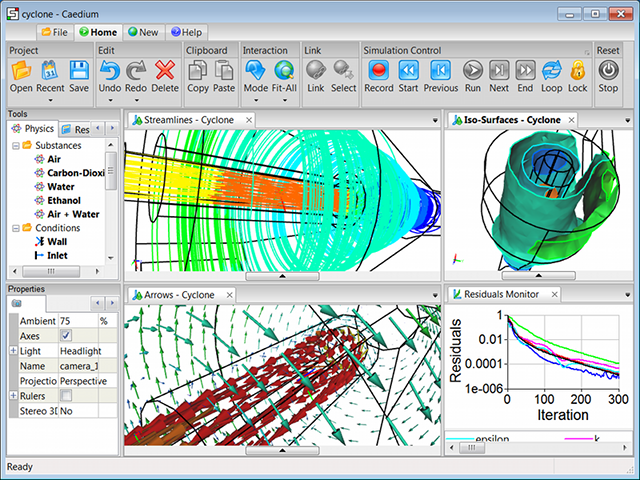
Unified Simulation Environment
Caedium is a Computer-Aided Engineering (CAE) system delivered in a single, unified simulation environment, so what?
The CAE industry is dominated by expensive software applications dedicated to a single, highly specific task (e.g. meshing). Each application has a unique user interface and terminology. In the worst, but common, case an engineer needs to learn up to 4 separate applications:
- Computer-Aided Design (CAD) to create geometry
- Pre-processor to mesh the geometry
- Solver (or analysis technique) to configure and run the simulation
- Post-processor to review 3d results and 2d plots
Transferring vast quantities of data between the applications is necessary, time-consuming and tedious - such that if the geometry changes the whole chain of applications down-stream must be revisited and reconfigured.
Currently only a few integrated systems are available and they are typically for a single physics type such as structural Finite Element Analysis (FEA).
Multi-physics calculations are often provided within CAD systems via extensions. However, rarely are these extensions fully integrated, often launching a separate dedicated physics application, again with its own unique and different user interfaces.
When CAE capabilities are seamlessly integrated within a CAD system, typically these capabilities are constrained by the limited generic functionality (e.g. visualization) provided by the CAD system.
The burden of learning imposed on a engineer by current CAE software is large, given the variation in user environments and terminology. A single unified, multi-physics, simulation environment could ease the learning burden, offering:
- Geometry capture and creation
- Physics definition and solution
- Visualization and plotting
 Caedium Screenshot
Caedium Screenshot
Caedium offers such an environment with some additional benefits:
- Quickly and easily move from geometry creation to physics definition to visualization and back again
- Geometry creation techniques apply to visualization sources, e.g. a particle release source
- Automatically mesh parameters inferred from the physics definition
- Goal driven, where simulation solving is governed by what quantities (e.g. fluid velocity) are required for visualization or plotting
- Login to post comments

